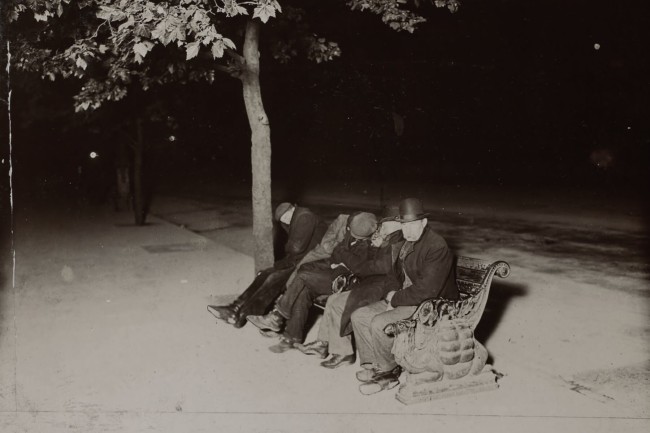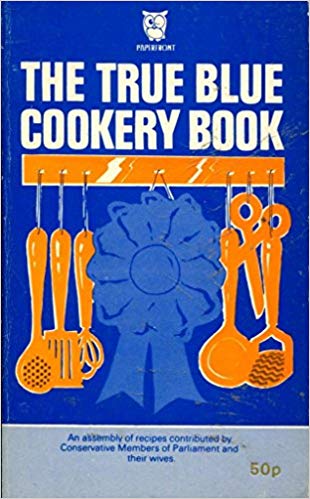Books Category
The latest books and literature reviews, comment, features and interviews, with extracts from famous texts and neglected gems.
Dutch designer Ootje Oxenaar’s handmade replacement book cover spines

Dutch designer Ootje Oxenaar created replacement book cover spines. You can see them in a new book, Ootje Oxenaar Spines.
Although renowned for his designs for Dutch banknotes and postage stamps, Oxenaar was a prolific designer of book spines. This wasn’t done for commercial publishers, but for books in his own library. When he didn’t care for what he saw poking out from a shelf (or when he needed to procrastinate) he would make his own spine for a book. The result is a fantastic and fantastical mosaic made of tall-and-skinny strips, hand-lettered and drawn with great skill and great whimsy.

Spotter: i love typography
Posted: 5th, January 2022 | In: Books, The Consumer | Comment
Winnie the Pooh is now in the public domain

This Public Domain Day on January 1, 2022 meant works from 1926 lost their copyright and became yours to play around with and enjoy. Around 400,000 recordings published before 1923 entered the public domain thanks to the 2018 Music Modernization Act (MMA).
You can explore them at the National Jukebox, the Library of Congress’ archive of sound.
You can find music to go with your version of A. A. Milne’s first Winnie the Pooh book. Here are some more books now in the public domain:
- A. A. Milne, Winnie-the-Pooh, illustrations by E. H. Shepard
- Ernest Hemingway, The Sun Also Rises
- Dorothy Parker, Enough Rope
- Langston Hughes, The Weary Blues
- T. E. Lawrence, The Seven Pillars of Wisdom
- Agatha Christie, The Murder of Roger Ackroyd
- Arthur Conan Doyle, The Land of Mist
- Edna Ferber, Show Boat
- William Faulkner, Soldiers’ Pay
- Willa Cather, My Mortal Enemy
- D. H. Lawrence, The Plumed Serpent
- H. L. Mencken, Notes on Democracy
- Vita Sackville-West’s The Land
- Franz Kafka’s The Castle
- Felix Salten’s Bambi, A Life in the Woods
Posted: 5th, January 2022 | In: Books, News, The Consumer | Comment
Ode to a Highflying Bird – Charlie Watts’ Jazz Book

Charlie Watts left behind not just a catalogue of great music and performances but a book. The trained graphic designer and musician best known as the drummer with The Rolling Stones loved jazz. In 1960, he wrote and illustrated a children’s book, a tribute to Charlie Parker called Ode to a Highflying Bird – “Frustrated with what life had to offer him in his hometown, he packed his whistle, pecked his ma goodbye and flew from his nest in Kansas City bound for New York.” As Watts recalled, “This guy who published ‘Rolling Stones Monthly’ saw my book and said ‘Ah, there’s a few bob in this!’” The book was published by London’s Beat Publications on January 17, 1965, and cost 7 shillings.
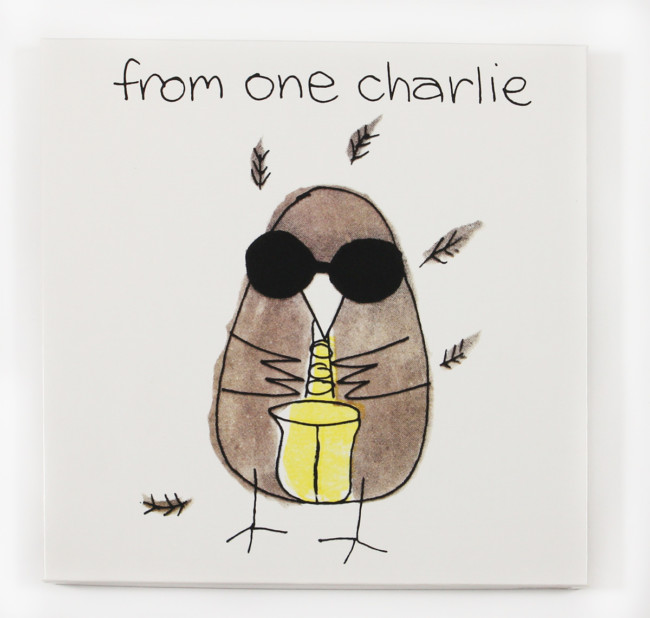
Spotter: UDiscoverMusic
Posted: 26th, August 2021 | In: Books, Celebrities, Music | Comment
When and why Charlie Watts punched Mick Jagger, by Keith Richards

Charlie Watts has died. The coolest and best looking Rolling Stone by far. In Keith’s autobiography, we get a bit of Charlie we can admire:


Spotter: Andrew Beasley
Posted: 24th, August 2021 | In: Books, Celebrities, Key Posts, Music, News | Comment
Cool Cats & Red Devils – brilliant photographs of British football fans in the 1970s

Iain S P Reid’s fantastic photos of British football fans in the 1970s are going to be in our new book. You can back Cool Cats & Red Devils at the Kickstarter. Please do – it’s a great project and 15% of all profits from both the prints and the book go to Melanoma UK.
Rewards are cool – with a choice of any of these great, very high-quality prints.
Cool Cats & Red Devils – the book.
Posted: 10th, July 2021 | In: Books, Key Posts, Manchester City, manchester united, Sports | Comment
Raymond Chandler’s dictionary of police and prison slang

Writer keep notebooks because ideas arrive unexpectedly. Raymond Chandler kept two sorts of notebook – one to jot down daily events and work in progress; the other a lexicon of titles, words, puns, slang, similes, story ideas, observations, and first drafts.
Narcotics Squad Slang
pin-jabber—hypo user
sniffer—snuffer
dodo—any addict
gow—a dope, as “gowed up”
kick the gong around—use dope (Harlem)
daisy crushers—shoes
pearl diver—dish washer
fancy pants—(verb) to act cagily or coyly
Hard Harry—a hard guy
Posted: 30th, June 2021 | In: Books, Celebrities | Comment
Jack London’s extraordinary photos of London
In 1902 American author Jack London (January 12, 1876 – November 22, 1916) visited London city. Writing in The People of the Abyss he described a trip to Whitechapel, seeing people in doss-houses and living rough on the streets. He was upset by the “old men, young men, all manner of men, and boys to boot, and all manner of boys” who had no other choice other than to sleep on the streets. “Some were drowsing standing up; half a score of them were stretched out on the stone steps in most painful postures…the skin of their bodies showing red through the holes, and rents in their rags.”
London had trouble finding anyone to show him London’s East End:
“But you can’t do it, you know,” friends said, to whom I applied for assistance in the matter of sinking myself down into the East End of London. “You had better see the police for a guide,” they added, on second thought, painfully endeavouring to adjust themselves to the psychological processes of a madman who had come to them with better credentials than brains.
“But I don’t want to see the police,” I protested. “What I wish to do is to go down into the East End and see things for myself. I wish to know how those people are living there, and why they are living there, and what they are living for. In short, I am going to live there myself.”
“You don’t want to live down there!” everybody said, with disapprobation writ large upon their faces. “Why, it is said there are places where a man’s life isn’t worth tu’pence.”
“The very places I wish to see,” I broke in.
“But you can’t, you know,” was the unfailing rejoinder.”
According to Michael Shelden, George Orwell‘s biographer, the English writer had read London’s book while in his teens and greatly inspired as can be seen in Down and Out in Paris and London and the Road to Wigan Pier.The People of the Abyss was published in 1903 the same year as his novel Call of the Wild was serialised – bringing London international fame. London later said: “Of all my books, the one I love most is The People of the Abyss. No other work of mine contains as much of my heart.”
The pictures Jack London took are available as fine art prints. They are extraordinary. See them here.
Posted: 27th, April 2021 | In: Books, The Consumer | Comment
Dr Seuss bans 6 of its books for their racism

Dr Seuss, aka Theodore Geisel, regrets the error. Six of the writer and artist’s titles are bing banned:
AP:
Six Dr. Seuss books — including “And to Think That I Saw It on Mulberry Street” and “If I Ran the Zoo” — will stop being published because of racist and insensitive imagery, the business that preserves and protects the author’s legacy said Tuesday.
“These books portray people in ways that are hurtful and wrong,” Dr. Seuss Enterprises told The Associated Press in a statement that coincided with the late author and illustrator’s birthday.
“Ceasing sales of these books is only part of our commitment and our broader plan to ensure Dr. Seuss Enterprises’ catalog represents and supports all communities and families,” it said.
The other books affected are “McElligot’s Pool,” “On Beyond Zebra!,” “Scrambled Eggs Super!,” and “The Cat’s Quizzer.”
Boris and the Bookshelves – books have been reduced to props
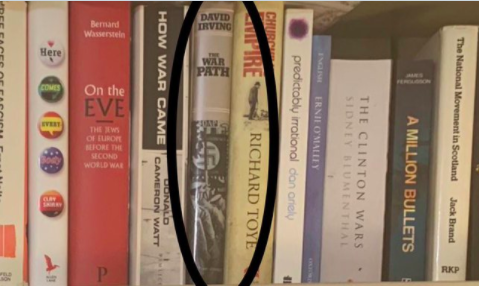
Did you see the books arranged behind Prime Minister Boris Johnson at Castle Rock school in Coalville, Leicestershire. Was the school librarian making a point in their choice of books to backdrop Boris? Titles on the top shelf included: Betrayed, The Resistance, The Subtle Knife, Fahrenheit 451, The Toll, Oliver Twist and Terry Pratchett’s genius Guards! Guards! What could it all mean asked the assembled hacks. “No comment,” said the school, which is, of course, a comment.
“Books seen behind Boris Johnson tell their own story,” says the Guardian headline. “Has a savvy school librarian or English teacher snatched a golden opportunity to have a pop at the PM in front of the nation?” asks a reporter from the TES. “Are the books behind Boris artfully arranged with a secret political agenda and commentary on the current government?” mused the Indy.
What you might not also have noticed is the PM’s words on the exams results fiasco. “I’m afraid your grades were almost derailed by a mutant algorithm,” guffed Boris. “I know how stressful that must have been for pupils up and down the country. I’m very, very glad that it has finally been sorted out.”
That mutant algorithm was coded by human beings. Sally Collier, the head of England’s exams regulator Ofqual has resigned. Jonathan Slater, the most senior civil servant in the Department for Education (DfE), is ‘stepping down’. But Gavin Williamson, the Secretary of State for Education, aka The Mutant, remains. Look for codes and symbols of defiance by all means, but in so doing try not to miss the obvious. Nearly 800 libraries have closed since 2010. Johnson holidayed amid the exam disaster-class, popping up to tell us that he was reading Lucretius’s On the Nature of Things.

Johnson, that school librarian and political pundits dialling in opinions from seats positioned in front of their bookshelves – watching on for signs of wrong-thinking by their peers and enemies – all assure us that books matter. But schoolchildren suffer through the lack of books and formal education. The local library has gone and there’s no longer a free space to sit, read the think. Books have been reduced to props. And that is telling.
Posted: 27th, August 2020 | In: Books, News, Politicians, Tabloids | Comment
Madeleine McCann: Old news for sale and who Brueckner did not kill
Madeleine McCann: a look at repotting on the missing child. In the stead of any news on the hunt for the missing child, the Daily Express gawps at the parents. News is that Gerry McCann had an ‘image fixed indelibly’ in his memory from less than an hour before his daughter disappeared”. This was “revealed during a book written by the parents on the missing toddler”. First up, dear Daily Express: get a sub-editor. Yesterday’s garbled news form Reach plc titles (the Express, Star and Mirror) was riddled with typos and literals.
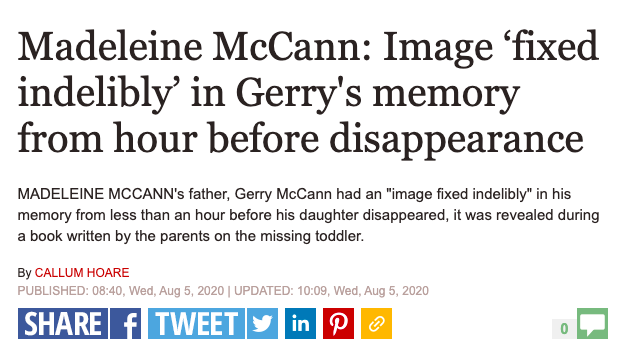
The scoop is that Kate McCann wrote something in her book, Madeleine: Our Daughter’s Disappearance and the Continuing Search for Her. That book was published in 2011. The Express has taken 9 years to tell its readers what was “revealed in it”.
Here’s the extract – “the heartbreaking account of Gerry’s final memory of seeing his daughter”:
“Madeleine was lying there on her left-hand side, her legs under the covers, in exactly the same position as we’d left her. For Gerry, this became one of those images I described earlier, pictures that fix themselves indelibly, almost photographically, in the memory. He paused for a couple of seconds to look at Madeleine and thought to himself, she’s so beautiful. After pulling the bedroom door to, restoring it to its original angle, he went to the bathroom before leaving the apartment.”
As the Express reads old books to ‘reveal’ nothing new, the Mirror looks at Christian Bruckner, the convicted German peadophile and rapist accused of kidnapping and murdering Madeleine McCann, a claim he denies. The headline is a sort of anti-news:
Madeleine McCann suspect Christian Brueckner ruled out of raping and murdering girl, 11
Any facts?
Claudia Ruf was kidnapped from Grevenbroich, Germany, in 1996, while walking her neighbour’s dog – before her partly burned body was found dumped around 40 miles away
So..?
A police spokesman told German newspaper Bild: “After comparing the information obtained, it can be said that Christian B was not in Grevenbroich at the time in the case of Claudia Ruf. In addition, a DNA comparison is said to have been negative.”
Are we now at the point where every unsolved case of child abduction and murder is to cross-checked with Christian Brueckner’s life? Good to look but why now – why not check him before? It all looks a b it ike PR, as if the police having pointe the finger at the revolting Brueckner are desperate to keep his name in the frame. This might be in hope that someone who knows something comes forward. But right now the is only circumstantial evidence linking Brueckner to the worlds most famous missing child. And in light of any evidence saying he committed a crime against her, we should presume he did not.
Posted: 5th, August 2020 | In: Books, Key Posts, Madeleine McCann, News, Tabloids | Comment
The 20 books people are most likely to lie about having read
Word on twitter is that these are the 20 books people are most likely to lie about having read.
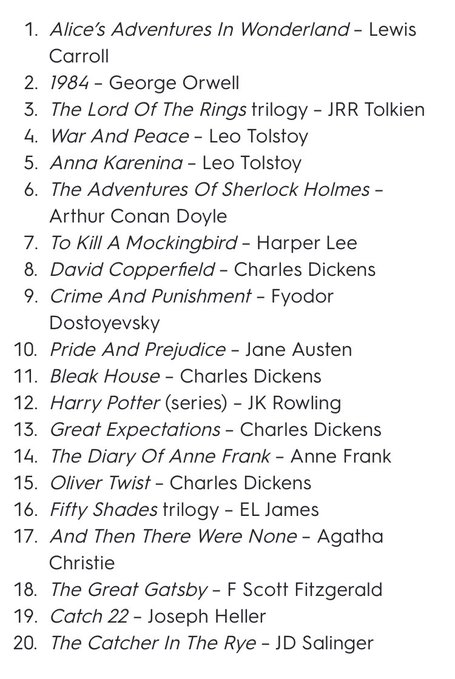
A friend once worked for a record industry bigwig who used to read the pass notes and then pretend he’d read the book. He did it in the hope it’d impress women. He was an utter bellend, of course. And it was enjoyable watching him founder when he met someone who’d actually read War And Peace.
Posted: 6th, May 2020 | In: Books, The Consumer | Comment
Amazon sells dog training book with forward from Nazi Hermann Göring
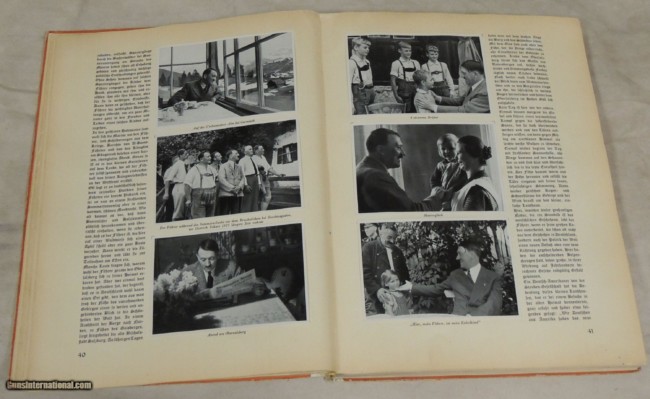
Hermann Göring wrote the forward to a puppy training manual you can buy on Amazon. Sections are not dedicated to knowing Jews by their scent, teaching your dog to raise a front right leg and going vegetarian. There is, however, lots about obeying orders. The JC reports that shopper Lorraine Phipps bought the Puppy Training manual from Amazon unaware that it contains a eulogy on Adolf Hitler printed inside, namely Adolf Hitler, 1931-1935: Pictures from the Life of the Führer with a forward by Hermann Göring.
“I bought a purported puppy training book from Amazon on March 2,” says Lorraine. “When my husband and I went to read it, despite the cover being as expected, it was actually a reprinting of a 1936 pro-Nazi propaganda book.” She wants Amazon to remove the “awful and misleading item from their listings”. Amazon says they are “investigating”.
Elsewhere you can buy Pictures from the Life of the Führer – without the Puppy Training cover. It is “one of the crowning popular propaganda achievements which helped consolidate Hitler’s hold on power, this book had sold millions of copies by 1940 and was one of those specifically ordered destroyed by the Allied occupation forces after 1945”.
Meanwhile… Somewhere in a German bunker a Nazi is teaching other recreational Herrenvolk to ‘Stay’, ‘Beg’ and ‘Play Dead’.
The Coronavirus reading list by Ernest Hemingway: 14 books and two shot stories
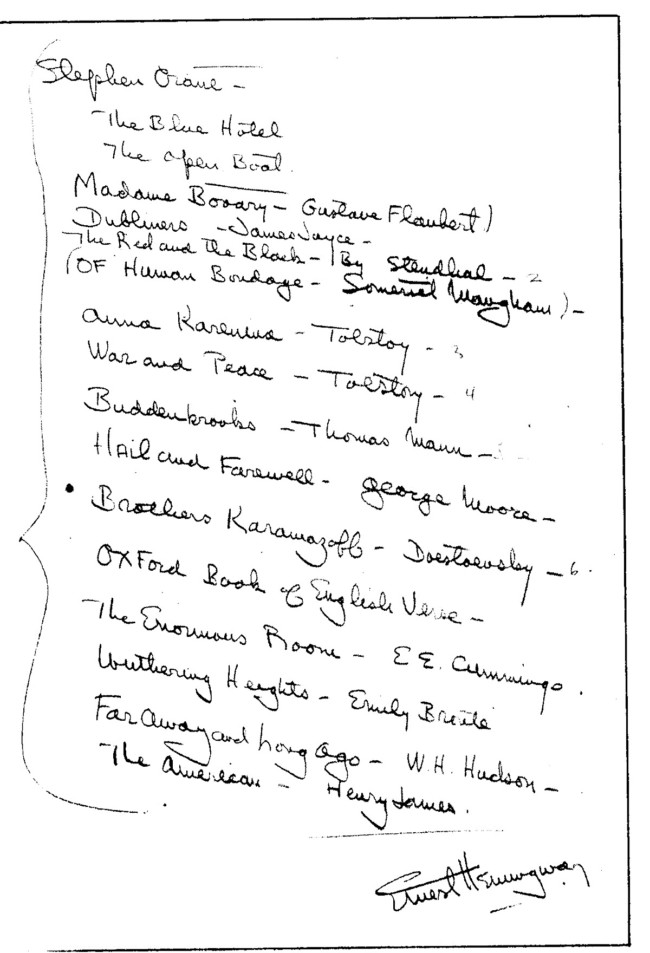
Stuck for a good book to read as the coronavirus spread makes staying in doors obligatory? Don’t be. This is a great reading list compiled by Ernest Hemingway. As Paul Gallagher writes at Flashbak:
In 1934, Arnold Samuelson read Ernest Hemingway’s short story One Trip Across. It inspired the 22-year-old student to travel across America and seek out the author. He wanted to ask Hemingway for his advice on how best to write.
Samuelson had just finished a course in journalism at the University of Minnesota. He harboured ambitions to be a writer. Packing a bag, he hitch-hiked his way down to Hemingway’s home in Key West. When he arrived, he found the place, like the rest of America, in the grip of the Great Depression. He spent his first night sleeping rough on a dock. During the night, he was woken by a cop who invited Samuelson to sleep in the local jail. He accepted the offer. The next day, feeling refreshed, Samuelson ventured out in the sun to search for his hero’s home.
When I knocked on the front door of Ernest Hemingway’s house in Key West, he came out and stood squarely in front of me, squinty with annoyance, waiting for me to speak. I had nothing to say. I couldn’t recall a word of my prepared speech. He was a big man, tall, narrow-hipped, wide-shouldered, and he stood with his feet spread apart, his arms hanging at his sides. He was crouched forward slightly with his weight on his toes, in the instinctive poise of a fighter ready to hit.
The full list is at Flashbak. But my pick would be… Well, I don’t know. I need to read them all. It’s a cracking list.
Internet Archive creates National Emergency Library for instant access to its 1.4million books

Shut indoors you can read and read thanks to the Internet Archive which has suspended waiting lists for the 1.4 million book on it shelves by creating a National Emergency Library.
During the waitlist suspension, users will be able to borrow books from the National Emergency Library without joining a waitlist, ensuring that students will have access to assigned readings and library materials that the Internet Archive has digitized for the remainder of the US academic calendar, and that people who cannot physically access their local libraries because of closure or self-quarantine can continue to read and thrive during this time of crisis, keeping themselves and others safe.
This library brings together all the books from Phillips Academy Andover and Marygrove College, and much of Trent University’s collections, along with over a million other books donated from other libraries to readers worldwide that are locked out of their libraries.
And you can help:
- Read books, recommend books, and teach using books from the National Emergency Library
- Sponsor a book to be digitized and preserved
- Endorse this effort institutionally or individually
- Share news about the National Emergency Library with your social media followers using #NationalEmergencyLibrary
- Donate to the Internet Archive
Fantastic.
Posted: 26th, March 2020 | In: Books, Key Posts, News | Comment
Read the Rolling Stone essay that became Hunter S. Thompson’s Fear and Loathing in Las Vegas

You can read for free the 23,000-word essay for Rolling Stone that Hunter S. Thompson turned into Fear and Loathing in Las Vegas. Thompson’s tale begins with the death of Ruben Salazar (March 3, 1928 – August 29, 1970) at an anti-Vietnam War protest. During the rally, Salazar was struck by a tear-gas projectile fired by a Los Angeles County Sheriff’s deputy. The story of Salazar’s killing became Thompson’s story Strange Rumblings in Aztlan.
Thompson strayed off subject. Waylaid by a jaunt to Las Vegas for the Mint 400 desert race for Sports Illustrated, the story fanned out. The eventual 23,000-word piece appeared in the November 1971 issue of Rolling Stone as ‘Fear and Loathing in Las Vegas: A Savage Journey to the Heart of the American Dream.‘
Spotter: OpenCulture
Posted: 1st, March 2020 | In: Books, Celebrities, The Consumer | Comment
Dresden: Kurt Vonnegut remembers the World War Two bombing

Kurt Vonnegut (November 11, 1922 – April 11, 2007) survived the allied bombing of Dresden during World War II. It inspired his novel Slaughterhouse Five.
The Allied onslaught on the German’s industrial and transportation hub was brutal. On 13 February 1945, British aircraft began the attack on the eastern German city of Dresden. In less than half an hour, warplanes dropped 1,800 tons of bombs. More then 25,000 people died in the firestorm. “Dresden was one big flame. The one flame ate everything organic, everything that would burn,” Vonnegut wrote. The city became “like the moon now, nothing but minerals. The stones were hot. Everybody else in the neighbourhood was dead.”
In 1983, Vonnegut recalled his time in an underground meat locker as a prisoner of war in Dresden for the BBC – ‘And So It Goes’:
Posted: 13th, February 2020 | In: Books, Celebrities, Key Posts, News, The Consumer | Comment
American Dirt: when critics attack
Jeanine Cummins’ American Dirt is the hottest book you haven’t read. Reportedly bought for a seven figure sum, the work hailed as the “Grapes of Wrath for our times” by someone in the know tells the story of a Mexican mother and her son who escape the drugs cartels. Sounds great. But not everyone’s a fan:
The publisher of the controversial novel American Dirt has canceled the remainder of the author’s book tour as critics and many in the Latinx community criticize the book for its portrayal of immigrants.
In a statement Wednesday, Flatiron Books president and publisher Bob Miller acknowledged the controversy surrounding the novel and its author, Jeanine Cummins, and said they decided to cancel the tour because of “specific threats,” including that of physical violence, that have been made against her.
Salman Rushdie is over here…
Posted: 30th, January 2020 | In: Books, News, The Consumer | Comment
A girl’s 1940s ledger of her Cat’s Whiskers
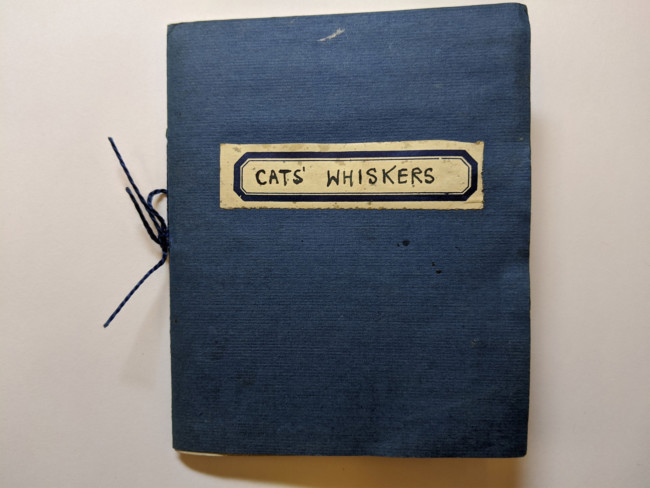
These pictures show us a handmade book by Janet Gnosspelius. The book contains her cats’ whiskers. Janet collected the whiskers she found in her home from 1940 to 1942. She then wove each and every whisker into the pages of her book and catalogued them, noting when, where and how they were found.
Janet Gnosspelius had artistic pedigree. Her mother was Barbara Collingwood, granddaughter of W.G. Collingwood, John Ruskin’s secretary. She was one of the first women to attend the Liverpool School of Architecture. Archivists say the meticulous nature Gnosspelius exhibited in creating her book remained throughout her life as she worked in “local history and building conservation, regularly posting samples of masonry to Liverpool City Planning Office, neatly labelled with their provenance and date, demanding their restoration.”
Gnosspelius continued her love of cats. At age 40 she wrote a diary. “The diary is no ordinary one,” says her archivists. “It is written from the perspective of her beloved ginger cat Butterball, recording the dates of his fights, illnesses, and stays with friends: ‘9 March 1965: wrapped my mouse in the mat outside kitchen door.’”
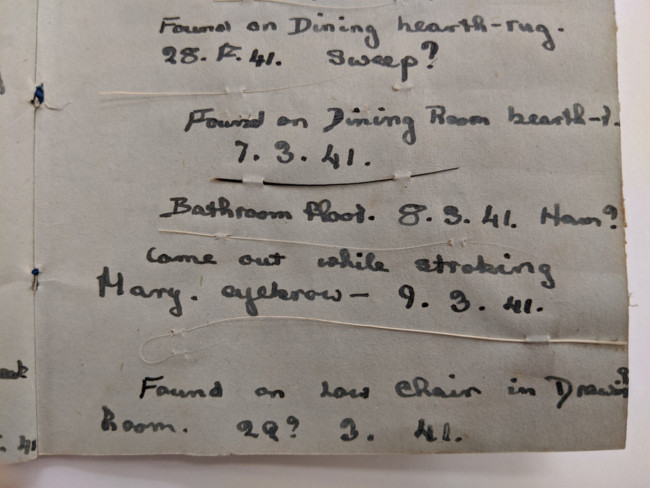
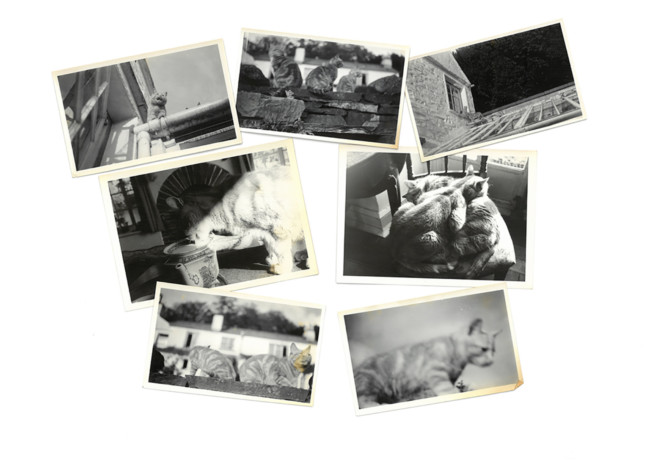
Spotter: Colossal, Flashbak, The Collingwood Archive of the Cardiff University Special Collections
Posted: 7th, January 2020 | In: Books, Key Posts, Strange But True | Comment
Read decades of scanned books for free at The Pulp Magazine Archive
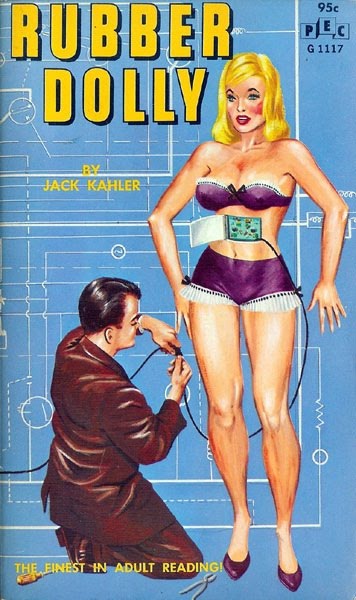
Fill your boots with pulp fiction at the Internet Archive, who along with The Pulp Magazines Project and The Pulp have been scanning a vast amount of Pulp Magazines for The Pulp Magazine Archive.
You can read crcaking stuff from Amazing Stories Volume 01 Number 01 (April 1926), featuring: Off on a Comet (Jules Verne; 1/2), The New Accelerator (H. G. Wells), The Man From the Atom (G. Peyton Wertenbaker), The Thing From—”Outside” (George Allan England), The Man Who Saved the Earth (Austin Hall), and The Facts in the Case of M. Valdemar (Edgar Allan Poe).
And there’s a load of racier stuff, too.
Spotter: Laughing Squid, Flashbak
Posted: 5th, January 2020 | In: Books, The Consumer | Comment
How to open a book – a vintage primer
William Matthews Bookseller instructs us ho to open a lovely book for the first time.
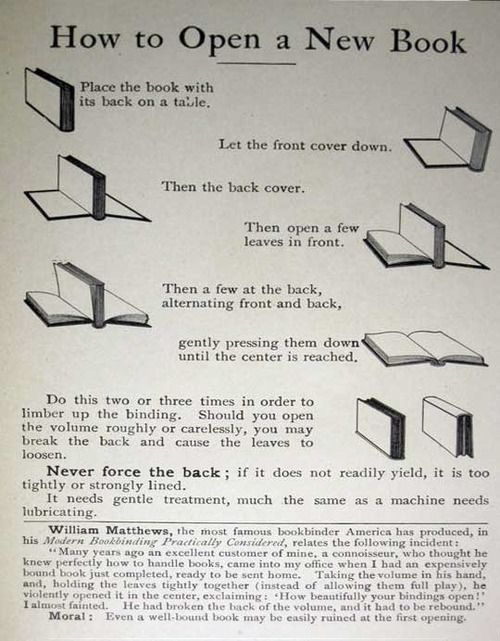
Spotter: Flashbak
Posted: 6th, December 2019 | In: Books, Strange But True, The Consumer | Comment
The True Blue Cookery Book – cookies with Tories
The Truth Blue Cookery Book is is “an assembly of recipes contributed by the Conservative Members of Parliament and their wives”. No husbands can cook, or at least no husbands are prepared to share their recipes.
Published in 1977 in association with the Ruislip-Northwood Conservative Association, the people and recipes are a blast from a different age. In the same series, titles include: “Right Way To Make James”; “Deep Freeze Secret”; “Easy Wine And Country Drinks”; and “Choose A Wine”. Any wine. They all get you there, dear boy:
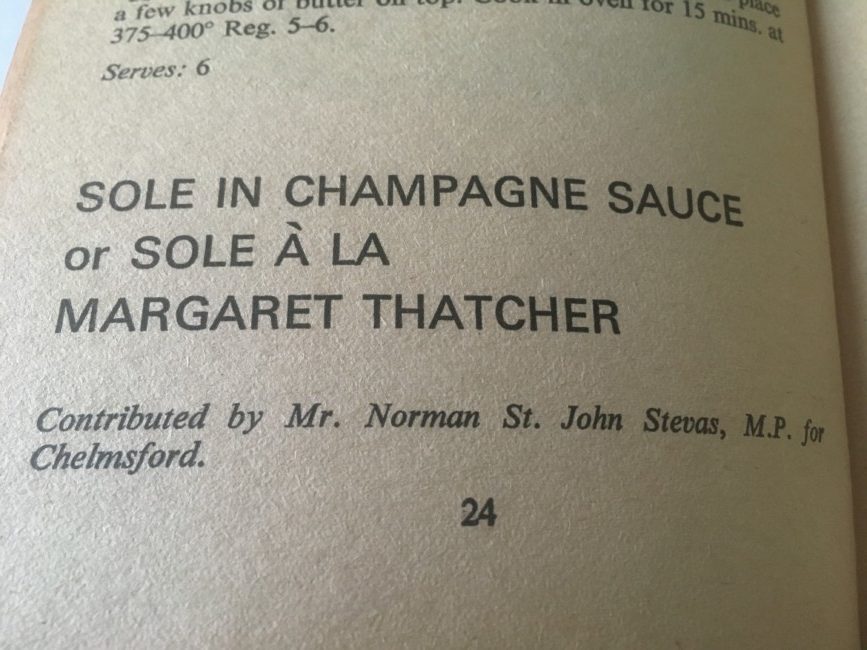
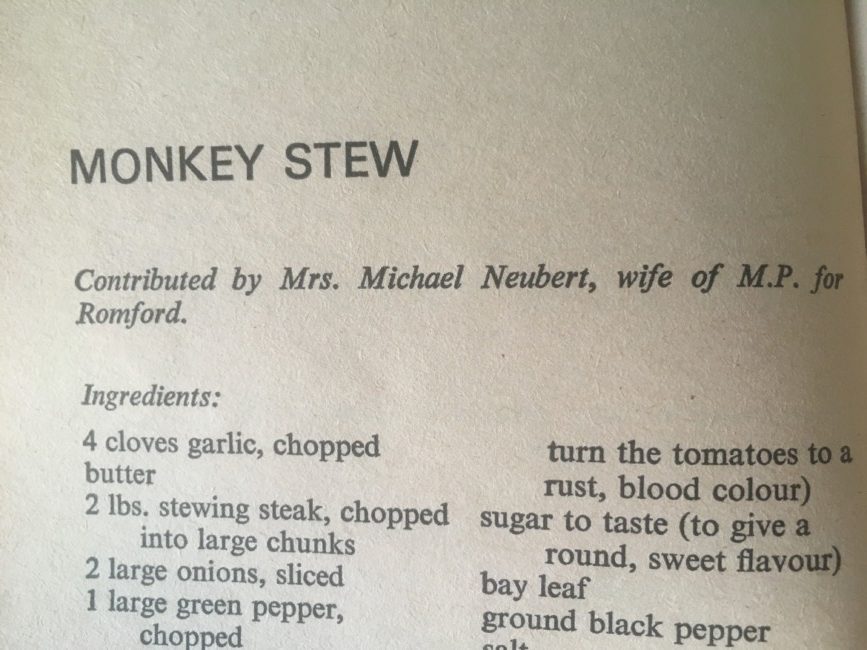
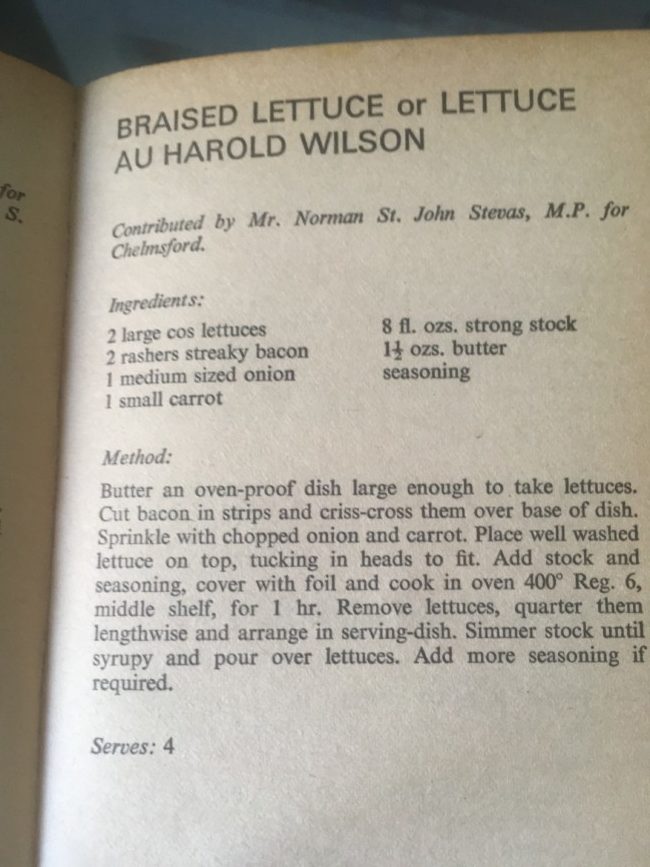
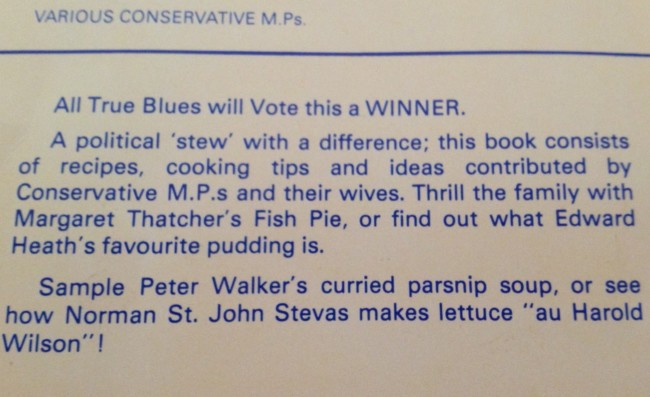
Spotter: Flashbak
Posted: 22nd, November 2019 | In: Books, Key Posts, Politicians, The Consumer | Comment
Salvador Dali Tarot cards

Salvador Dalí designed a full deck of tarot cards for the James Bond film Live and Let Die. But the production team were reluctant to pay Dalí’s fee, so they never appeared in the movie. But the artist liked the work and completed the set in 1984. Now art book publisher Taschen (they make those massive coffee table books so big they could double as coffee table) is releasing the deck.
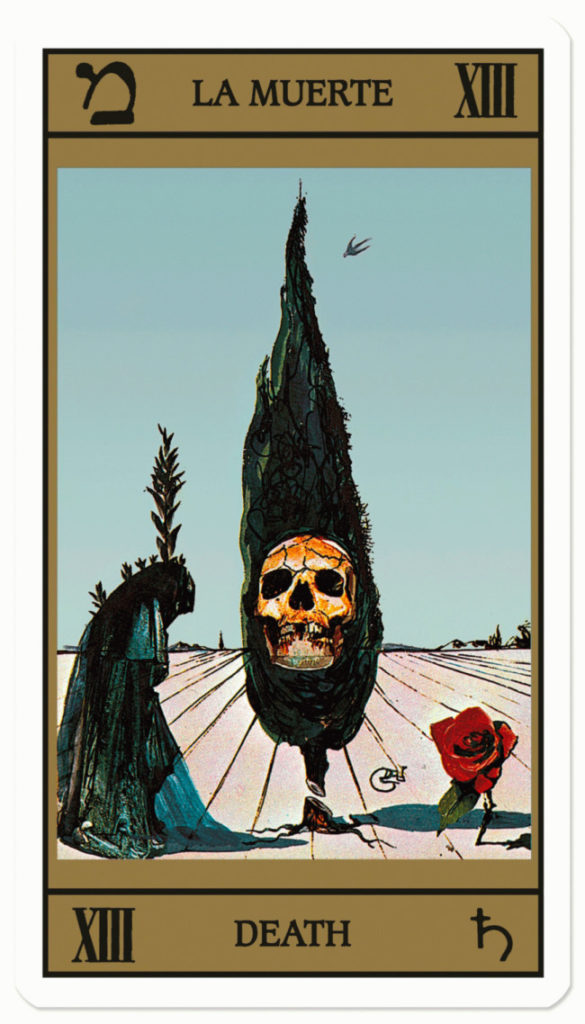
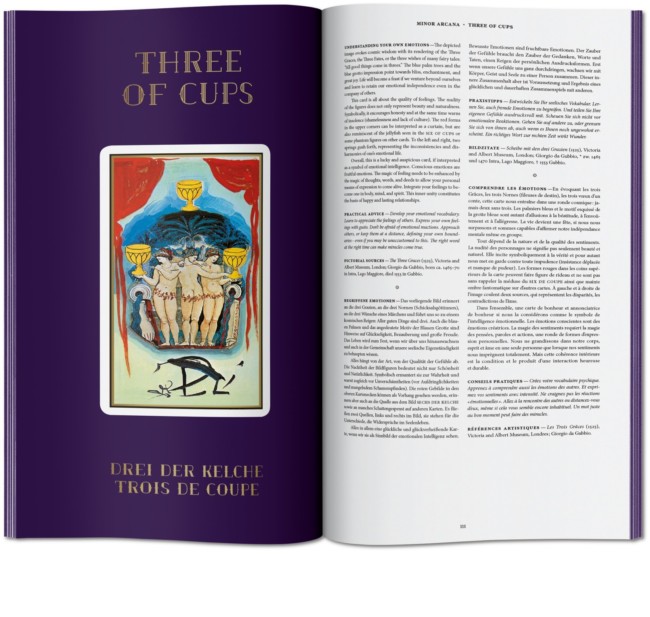
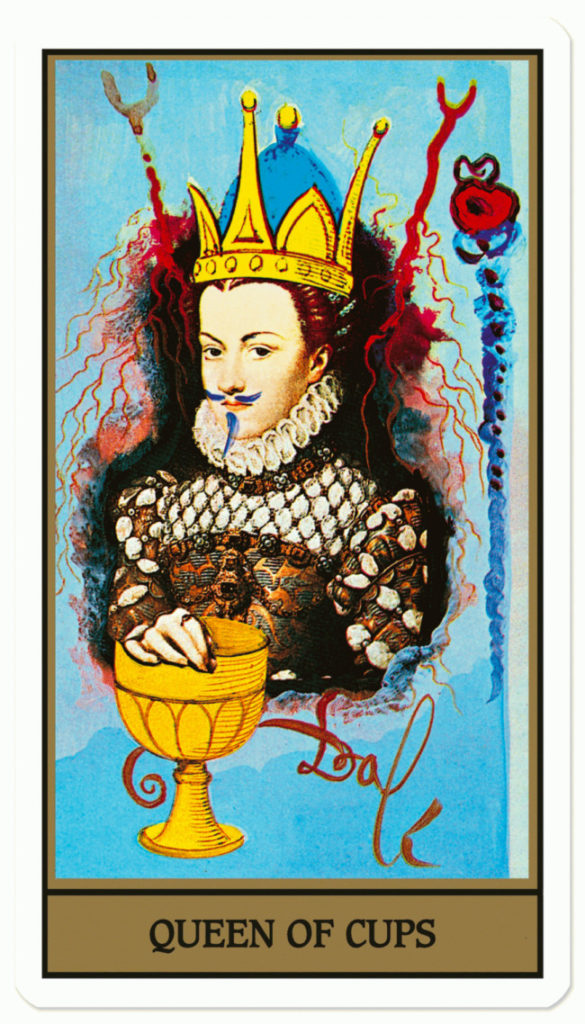
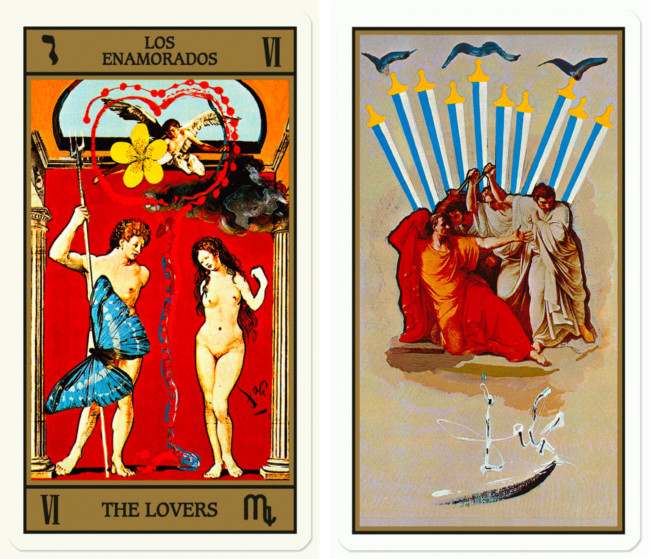
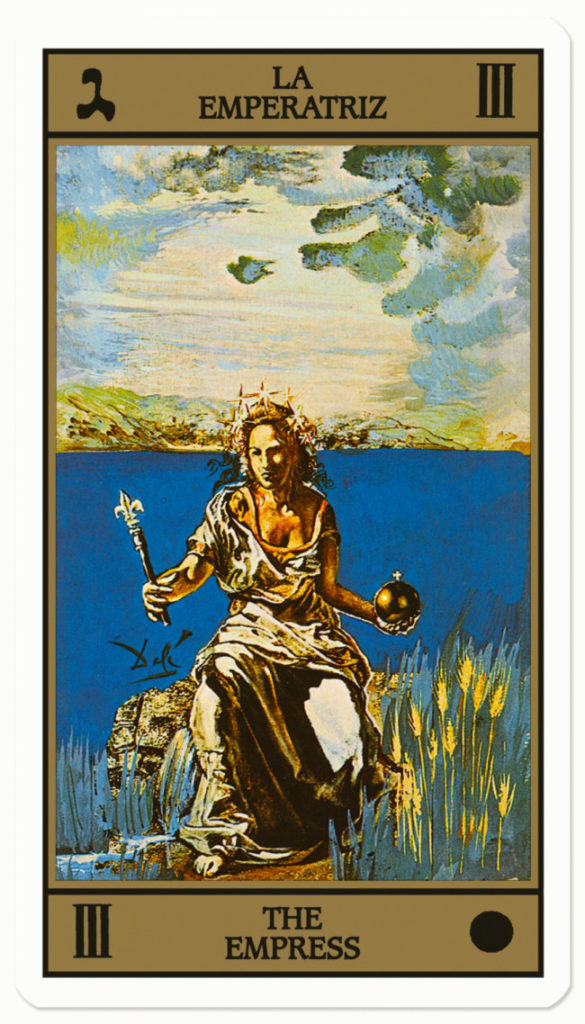
Spotter: Hyperallergic
Posted: 11th, November 2019 | In: Books, The Consumer | Comment
Joan Didion : ‘Grief turns out to be a place none of us know until we reach it’
The new Joan Didion film on Netflix, The Centre Will Not Hold, got me reding her essays. In The Year of Magical Thinking (public library), the American essayist writes of the pain that followed he death of her husband John Gregory Dunne (May 25, 1932 – December 30, 2003).
Grief turns out to be a place none of us know until we reach it. We anticipate (we know) that someone close to us could die, but we do not look beyond the few days or weeks that immediately follow such an imagined death. We misconstrue the nature of even those few days or weeks. We might expect if the death is sudden to feel shock. We do not expect the shock to be obliterative, dislocating to both body and mind. We might expect that we will be prostrate, inconsolable, crazy with loss. We do not expect to be literally crazy, cool customers who believe that their husband is about to return and need his shoes. In the version of grief we imagine, the model will be “healing.” A certain forward movement will prevail. The worst days will be the earliest days. We imagine that the moment to most severely test us will be the funeral, after which this hypothetical healing will take place. When we anticipate the funeral we wonder about failing to “get through it,” rise to the occasion, exhibit the “strength” that invariably gets mentioned as the correct response to death. We anticipate needing to steel ourselves the for the moment: will I be able to greet people, will I be able to leave the scene, will I be able even to get dressed that day? We have no way of knowing that this will not be the issue. We have no way of knowing that the funeral itself will be anodyne, a kind of narcotic regression in which we are wrapped in the care of others and the gravity and meaning of the occasion. Nor can we know ahead of the fact (and here lies the heart of the difference between grief as we imagine it and grief as it is) the unending absence that follows, the void, the very opposite of meaning, the relentless succession of moments during which we will confront the experience of meaninglessness itself.
Spotter: BrainPickings

